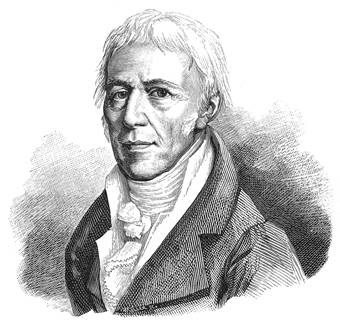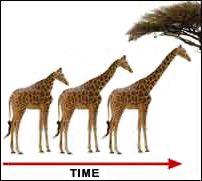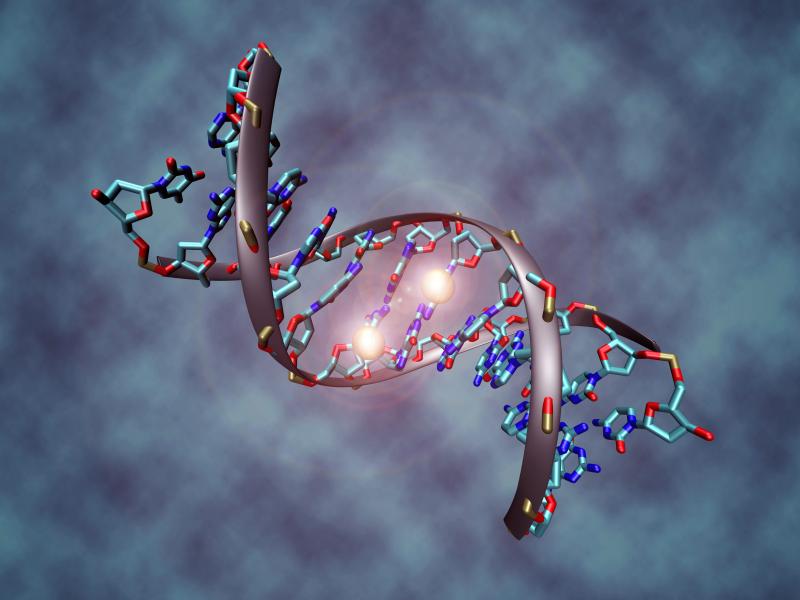 So, where were we? Ahhh, yes. I dropped the “L” word—Lamarck. When we last left our little mice friends, Dr. Skinner and his lab had established that epimutations, brought on by in utero exposure to certain nasty chemicals, had managed to persist through four generations without any repeat exposure. Their conclusion was that somehow, the epimutations that caused low sperm counts and malformed sex organs in male mice had evaded the waves of epigenetic reprogramming that occur after fertilization (repeatedly) such that generations of male mice were showing these same traits—these same acquired traits.
So, where were we? Ahhh, yes. I dropped the “L” word—Lamarck. When we last left our little mice friends, Dr. Skinner and his lab had established that epimutations, brought on by in utero exposure to certain nasty chemicals, had managed to persist through four generations without any repeat exposure. Their conclusion was that somehow, the epimutations that caused low sperm counts and malformed sex organs in male mice had evaded the waves of epigenetic reprogramming that occur after fertilization (repeatedly) such that generations of male mice were showing these same traits—these same acquired traits.
Hence. Lamarck.
I’m always happy to have an opportunity to talk about Lamarck, who is all to often used to illustrate the naïve notion that scientists before Darwin were silly. Lamarck’s theory of use-and-disuse, often termed the theory of inheritance of acquired characteristics, proposed that organisms could alter their anatomies through repeated action or prolonged neglect and then pass on these either enhanced or atrophied characteristics to offspring. Textbooks often boil Lamarck down to a cartoon giraffe elongating its neck repeatedly in pursuit of leaves, then passing on this new long-necked trait to the next generation—something that to our modern eyes, seems pretty ridiculous.
 The thing is, Lamarck was actually a really good scientist. He was among the first to link the environment to diversity among organisms. Use-disuse was Lamarck’s proposed mechanism for evolution, a way by which traits could be shaped by the environment and passed from parent to offspring generation after generation. In the pre-genetics days Lamarck’s theory was pretty reasonable. In fact, in On the Origin of Species, Darwin wrote, that the vestigial eyes of moles and of cave-dwelling animals are "probably due to gradual reduction from disuse, but aided perhaps by natural selection."
The thing is, Lamarck was actually a really good scientist. He was among the first to link the environment to diversity among organisms. Use-disuse was Lamarck’s proposed mechanism for evolution, a way by which traits could be shaped by the environment and passed from parent to offspring generation after generation. In the pre-genetics days Lamarck’s theory was pretty reasonable. In fact, in On the Origin of Species, Darwin wrote, that the vestigial eyes of moles and of cave-dwelling animals are "probably due to gradual reduction from disuse, but aided perhaps by natural selection."
All of this background is to explain that there is really no reason to invoke Lamarck to explain what happened with Dr. Skinner’s’ mice. First of all, the persistence of the epimutations do not rely on any kind of use/disuse mechanism, and even ignoring that, they don’t in any way demonstrate inheritance of acquired characteristics in the Lamarckian sense. The reason is simple: epimutations are not permanent. Epigenetic tags have to be actively maintained every time DNA is replicated. Not surprisingly, this process is not 100% efficient, so epimutations tend to decay over time—the more rounds of replication, the more quickly the tags are lost.
That’s not to say that interactions with the environment over an individual’s lifetime can’t cause long-lasting effects via epigenetics on the individual—they can. And thanks to Skinner’s mice, we now know that induced epimutations can sometimes (IF they are in the germ line and IF they evade epigenetic reprogramming) persist for several generations, but their effects are, as far as we can tell based on the research, always limited. Lamarck was looking for permanent changes—changes that would affect the very DNA (though, of course, he didn’t know it was DNA) of organisms—epimutations do not fit this bill.

Mutation to DNA base sequence: replicated faithfully with a high degree of accuracy and do not decay: Natural selection, ahoy!
Epimutation: must be actively maintained with each round of DNA replication; tends to fade over time; almost always reset after fertilization: Natural selection, not-so-much.
So if epimutations aren’t subject to natural selection, then they have nothing to do with evolution, right? Wrong. The systems that make epigenetic modifications possible are themselves encoded (and selected for) by regular old genetics, subject to good, old-fashioned Darwinian natural selection (and other mechanisms of evolution). In other words, it is still natural selection that drives whether these epigenetic systems (and therefore their effects) become common in populations. If a mutation to an epigenetic system conferred an advantage or disadvantage to an individual, then that variation would be subject to natural selection.
There has been very little research on the evolution of these systems to-date, but there is little doubt that they confer an advantage to individuals by providing a way for individuals to interact with and respond to the environment. Fight or flight, or the signaling systems like the lac operon (anyone remember that one?) are examples of quick, temporary ways to respond to the environment via chemical messages. Natural selection is a permanent very long-term way to shape interactions via adaptations. Epigenetics offers a third kind of middle-ground method: a relatively stable (but not permanent) way to respond to the environment by modifying gene expression.

And now we come to the Big Point. Epigenetics do not subvert Darwin or our basic understanding of genetic mechanisms of evolution. There are some absolutists out there that contend that anything that came after Darwin must contradict Darwin, but that assumes that Darwinism is some kind of rigid doctrine—which it isn’t.
So, in the hands of people at the Discovery Institute, epigenetics becomes a paradigm-breaker because it contradicts “Darwinism.” But in the hands of someone who actually understands evolution, epigenetics is a relatively new and very cool addition to our knowledge of the genome and its dynamic capabilities.
*Just a quick note of thanks to my friend Ken Miller for all his help on these posts. I hope that they have been more illuminating than confusing—this stuff is not easy, in large part because the research is so new. No one knows, yet, for example, how or why the epimutations evaded the reprogramming after fertilization in Skinner’s mice, though there are some hypotheses out there. Keep your eyes on this blog for updates!
Have an idea for a future Misconception Monday or any other kind of post? See some good or bad examples of science communication lately? Drop me an email or shoot me a tweet <at>keeps3.

